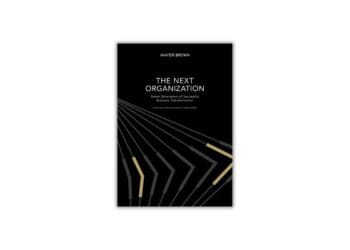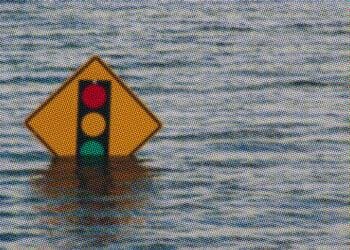One can’t overstate the importance of planning to prepare for a possible crisis. It’s true for preventing fires, and it’s true for preventing compliance issues. Calvin London draws parallels between Australia’s devastating wildfires and ethical issues that can bring a company to its knees.
Australia is trying to recover from the worst bushfire emergency on record. As thousands of firefighters from around the globe are finally getting on top of the multiple bushfires (also known as wildfires) burning across Australia, people are starting to assess the impact that this is likely to have in the near future.
As I sat one night looking at the tragedies unfolding in one area (Kangaroo Island), where I was only a few months ago for holiday, it occurred to me that we can see several aspects of compliance coming through in these tragic events: cause, planning, persistence, prevention and human ethical behavior.
It is often sobering to realize that although as compliance officers we tend to think we are alone in fighting this strange battle between compliance and corruption, there are strong similarities to many of our everyday battles – the bushfires being one case in point.
Putting These Fires into Perspective
The recent fires (which in many places are still burning as of mid January) started toward the end of November. As I write, 18,736 million hectares (46.3 million acres) has burned or is burning across all Australian states and territories. That equates to a land mass bigger than the U.K. and almost all of Japan.
Since the start of the season, the ongoing bushfires have destroyed thousands of homes, buildings and other facilities. Thirty-two people have been confirmed dead as a result of the fires since they started. Predications are that it will the biggest of Australia’s bushfires because of the magnitude of fires; at one stage, every state in Australia was dealing with multiple fire fronts.
Ecologists from The University of Sydney estimate more than a billion mammals, birds and reptiles have been lost since September with concerns that entire species of plants and animals may be wiped out by bushfire. Though bushfires are not uncommon in Australia, it is the magnitude of the recent fires that is having such a devastating effect. In most situations, loss of life to animals is as a direct result of the fire, and surviving animals can still find food and shelter. In the recent fires, the devastation has been so extensive and over such a wide range that even surviving animals will starve or be hunted down by predators such as foxes and cats drawn to the fire-affected areas to hunt.
On Kangaroo Island, Australia’s third-largest island and known as Australia’s “Galapagos Island,” one-third of the island was burned. Large parts of the island are designated as protected areas and host animals such as sea lions, penguins, kangaroos, koalas, pygmy possums, southern brown bandicoots and Ligurian bees. NASA estimated that the number of dead koalas could be as high as 25,000 – about half the total population of the species on the island (which is the only Chlamydia-pathogen-free population in Australia). A quarter of the beehives of the Ligurian honey bees that inhabited the Island are also believed to have been destroyed; these colonies are among the last remaining hives of this species in the world.
In many respects, it was the perfect storm: Australia experienced its sixth-hottest December days on record in 2019, and the average rainfall for December and other months leading up to December were among the lowest on record. Additionally, more than three-quarters of the Australian continent experienced the worst fire weather conditions on record in December, as 2019 set new benchmarks for heat and dryness across the country. Data from the Bureau of Meteorology suggested that most of Australia was more prone to fire in December than in any month since 1950, when records began. As they say, the rest is history.
As Australia continued to blaze though Christmas and into the New Year, the effects of the bushfires were also felt in major cities, miles away from the fire fronts. In Melbourne and Sydney, air pollution from the fires reached unprecedented levels of concern as winds blew smoke and dust across the cities to the point that some labelled it at one point the worst in the world. The effects of these fires were not merely local; they became a national event. Many of the effects are still to be realized as a result of stock losses and facility damages.
The Cause
Several of the recent fires are believed to have been started by careless human actions, children playing with matches, people burning on total fire ban days, cigarette butts thrown out of car windows and so on. Unfortunately, some are also suspected of being deliberately lit. Figures from the Australian Institute of Criminology indicate that around half of all the fires in Australia are deliberately lit or are considered suspicious.
The same is true of many compliance incidences. In some situations, the players do not think far enough ahead to consider the effects of their actions, often until it is too late to avoid the consequences. In other cases, I am sure players are aware of their actions but “do it anyway” for some personal gratification or gain. The mentality of someone who would deliberately go out and start a bushfire is no doubt complex and beyond the scope of this article. The same can be said of many who deliberately pass bribes or corrupt government officials in the provision of illicit or counterfeit medical products as an example.
Planning
Australian residents are urged to develop the domestic equivalents to business continuity plans (BCPs) in times of crisis such as bushfires. Many articles detail what to do before a fire, during a fire and after a fire and then provide important contact details. Sound familiar?
All businesses should also have a continuity plan to protect their business in times of catastrophe. This could be related to fire, flood, power failure, security risks, etc. Regardless of the cause and although the modus operandi may vary, the principles are the same.
In the case of bushfires, many residents may have had a continuity plan to protect their home, but with the ferocity of the fires, this would have been fruitless. Perhaps the most important element in this case was answering the question, how do we get out of here, and when do we make that choice?
This is a point I will return to in a later section (prevention), but suffice to say like any business, due consideration should be given to possible scenarios that might occur and pre-thought as to how to deal with these is paramount to the success and effort put into the business continuity plan. A plan that looks good on paper is of no value unless you have the confidence that it will work. It is, after all, your insurance policy to protect your reputation.
Persistence
The persistence of the firefighters is to be admired and provides a fine example for anyone working in compliance. In my experience, compliance can be a bit like fighting fires. When an issue erupts, it’s all hands on deck, and often the challenge is a long and drawn-out process before it is contained. “Rome wasn’t built in a day,” as they say, and companies do not grow a positive compliance culture overnight.
Firefighters also need to be diligent. Continually going back and checking that the smoldering trees do not suddenly erupt again and cause further damage, especially to burned areas that were thought to have been previously extinguished. Isn’t this too a lot like compliance? A good compliance program must contain adequate attention to monitoring – continual process of checking and re-checking that everything is in order and working the way it was intended. Being ever vigilant that a new fire could break out at any time. We need to monitor our progress constantly and, if something doesn’t work, we need to change tactics. Just like a bushfire, it will keep coming back if fed by the right elements.
Prevention
We can have the best business continuity plans and the best “firefighters,” but the real trick is to prevent the fires from starting in the first place; preventative compliance rather reactive compliance. This is easier said than done.
A significant percentage of fires are caused by irresponsible, callous humans acting unethically; 13 percent are deliberately lit, and a further 37 percent are suspicious. The motivation behind people that would go out and deliberately light a fire is probably not too distant from the mentality of someone that would deliberately introduce fake medicines with little activity onto the market. Let’s just accept that such people exist, a concept that I have written about previously.
The remaining 50 percent are more difficult assign a cause to – electricity, lightning, careless use of equipment, children playing with matches, sparks from car exhaust pipes and so on.
However, when it comes to prevention, there seems to be an imbalance between the “act committed” and the “punishment for the crime.” The punishments for people that deliberately light fires and as a result destroy property, human life and animal life and cause economic and personal hardship on all those that are involved with fighting the fire hardly seem to be appropriate. The same could also be said of individuals that deliberately break laws and participate in corrupt acts that cause the loss of property, life and well-being as a result.
We have discussed above the value of prevention plans in the case of bushfire prevention and equated these to modern day business continuity plans. In the recent bushfires and on countless occasions previously when there have been fires, it has been demonstrated that even when people had plans in place, they had never been “road tested.” It is all very well to have a garden hose at the front or back of a house, but it does no good if the hose is defective. Many businesses have business continuity plans that are nicely laid out, that cross all the T’s and dots all the I’s, but remain unproven.
It is a very useful exercise to build into an effective compliance or quality program a regular “road test” of the BCP by working through a mock scenario. At the time when it is needed, the business continuity plan can and should provide strategic guidance that was established at a time when there was no immediate pressure. It will be of little value if the plan is (1) never updated to reflect the current environment and (2) if it is not followed.
Case in point: In one of the serious fires that burned through a large area of land in southeast Australia, communities and visitors were advised to remain vigilant of emergency information and make a plan of action in case fire activity increased. However, thousands of tourists and some residents refused to leave, resulting in them being trapped in isolated towns with no way to escape. The result was a significant evacuation exercise run by the military involving Black Hawk helicopters and a Navy ship.
Plans are great, but only if they work. The effects of human elements on a plan’s success should not be overlooked. Unfortunately, there is a long list of companies that are saying “if only…,” because there was insufficient regard and discipline to carry out any contingency plans.
Human Ethics and Integrity
The final analogy from the bushfire tragedy is the value of human ethics and integrity. If there is any shred of positivity to come out of bushfires, it is the heroic and kind acts of some people. Even those affected by themselves come to the aid of others to help fight a fire near their property and to share accommodations. There are usually stories that come to light of people that go around and pick up the injured wildlife and take them to refuges for rehabilitation, of those that work in the background to make food and drink or provide first aid for firefighters, etc. Many of them do so as volunteers. This should act as positive recognition that there are good people to counteract those that do not have good intentions. They just need a “call to arms.”
In compliance, we have to be the town criers and raise that call to arms.
The more people sharing a positive message, the more powerful the message and the more difficult it is to disregard.
In conclusion, while tragic, the recent bushfires in Australia serve as a useful comparison to display several principles that we rely on or deal with in everyday compliance: the need for planning and persistence and the challenges of prevention, human ethics and integrity. They also serve as a valuable teaching tool in the values (and issues) associated with business continuity plans and their effective implementation.
Perhaps it is time for your company to refresh your business continuity plan or to run a mock event to see if it really works. You don’t want to be sitting there saying, “if only…”



 Calvin London, Ph.D., is the Founder and Principal consultant at
Calvin London, Ph.D., is the Founder and Principal consultant at 








